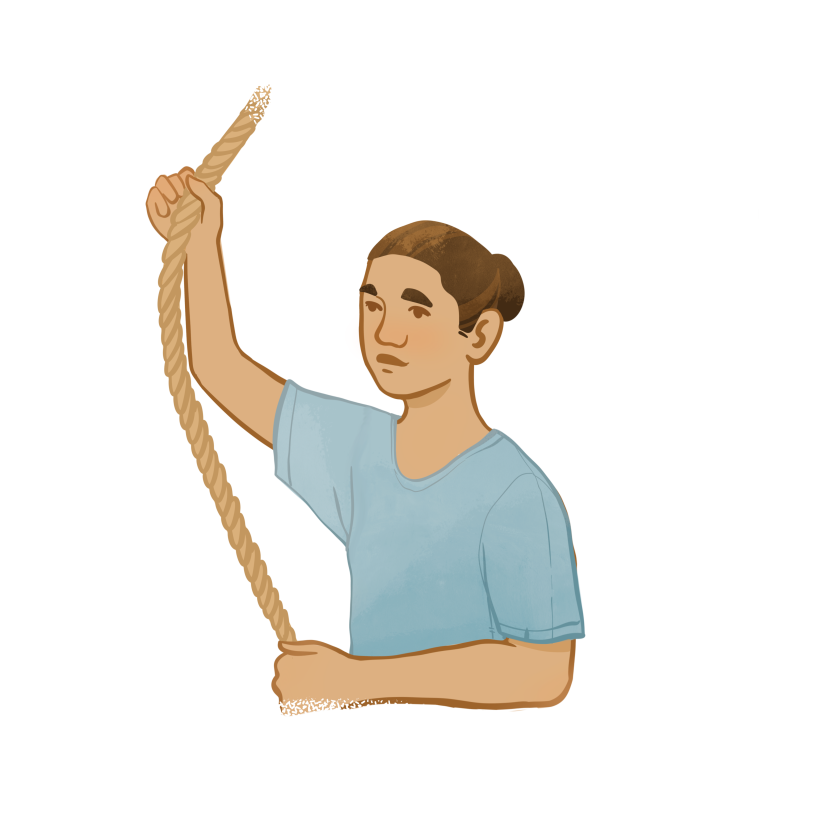How the synergy of voyagers integrates into Iosepa himself

The Wa‘a Crew Handbook, Iosepa’s official crew training manual, emphasizes the importance of Iosepa’s success through his crew’s unity with one of the handbook’s 28 principles of crew behavior stating, “Teamwork is essential to success; never let your team down.” Another one of its principles establishes, “Care for the canoe as it will care for you.” Indeed, the only way Iosepa succeeds in “spreading aloha around the world” is by the collective effort of each voyager and their willingness to be a part of Iosepa himself, as clearly written in the handbook.
Iosepa, our kūpuna
In the training manual’s “Code of conduct”, it states, “The canoe is our universe. Care for Iosepa as you would your kūpuna.” All of Iosepa’s crew members must treat each other as family including Iosepa himself as the manual says.
As described by Hawaii Public Health Institute’s official website, kūpuna are “among the most valued members of society.” The website says the word itself signifies wisdom, reverence and intellect. Kūpuna are living treasures of the community, as emphasized in the website.
Voyagers of Iosepa treat him as their kūpuna through the many duties focused not only in maintenance, but also in respect. For example, as part of the crew’s code of conduct, the manual states illicit drugs, smoking and alcohol are strictly prohibited. The training states voyagers must at all times show respect, humility and a desire to seek wisdom while on the canoe. “You are representing much more than yourself,” the manual says, as it reminds voyagers that their actions reflect their community, family and ancestors.
The admiration and respect for Iosepa can be heard in the chant “Hiki Mai E Nā Pua”, composed by Kumu Hula and Cy Bridges, in one of the verses, saying, “A cherished adornment of the ancestors/Come forward, proceed forward.”

Extensions of Iosepa
“See, feel, smell and hear everything on and around the vessel,” the manual states as it teaches how crew members must be aware of everything aboard and around Iosepa. Throughout the handbook, one principle is continually highlighted: a voyager’s dedication of all their time and energy to the canoe.
In particular, crew members assigned to watch Iosepa are trained not to sleep, use earphones and sometimes turn off their communication devices during their assignment, as listed in
the handbook.
The handbook states that voyagers must constantly be ready for anything that Iosepa needs. For example, the manual teaches that the crew must already be ready 10 minutes before their assigned watch. “Always be on surveillance for safety, alert to dangerous conditions, situations, actions or behaviors,” says the manual. The handbook emphasizes that a voyager must know the canoe as if it is a part of their own body, because it states that a crew member’s awareness includes knowing everything about Iosepa down to the potential leak points and location of the other voyagers themselves.
The canoe is our universe. Care for Iosepa as you would your kūpuna.
All hands on deck
“Understand that you are judged as a group; individual actions reflect all of us as a group,” the manual establishes in the section entitled “Crew behavior.” It states that the crew must treat each other as family, caring as brothers and sisters.
The handbook trains voyagers with the “Buddy System,” a protocol that requires each crew member to have a “buddy” or partner to help with tasks, relaying information and emergencies. The system even goes as far as knowing each other’s overall health including sleep, hydration and similar conditions. It states that each partnership must support leadership in maintaining a safe and healthy crew.
The camaraderie of the crew is seen in the handbook’s chant, “Auē Ua Hiti ē,” with the lyrics, “E lauhoe mai ka waʻa i ke kā,” which means “Everybody paddle the canoes together.”
Assignments on the Iosepa
CAPTAIN
According to the handbook, the captain is “responsible for the overall planning and execution of the mission, the safety and preservation of lives and property and the maintenance of vessels and equipment.“The captain is responsible for the training and management of the crew and everything the crew does or fails to do,” the handbook states.
Prior to departure, the handbook says the captain must designate a chain of succession if they become incapacitated on board.
WATCH CAPTAIN
The watch captain carries out the commands of the captain, according to the handbook. They are directly in charge of operations, crew safety and delegation of duties.
WATCHES
According to the handbook, a watch is a group of crew members that are assigned to carry out voyaging tasks. These crew members are responsible for steering, lookout, maneuvering and sail handling, the handbook states. The handbook says other duties include cleaning, maintaining the vessel and preparing food for the crew.
HELMSMAN
The helmsman is in charge of steering the vessel, as written in the handbook. The handbook says the helmsman requires constant and intense concentration, and may not leave their station even during an emergency.
COURSE SPOTTER
The course spotter is in charge of directing the helmsman which direction to steer in order to maintain Iosepa’s course, the handbook says. Like the helmsman, the handbook says a course spotter requires great concentration and may not leave their station during emergencies.
